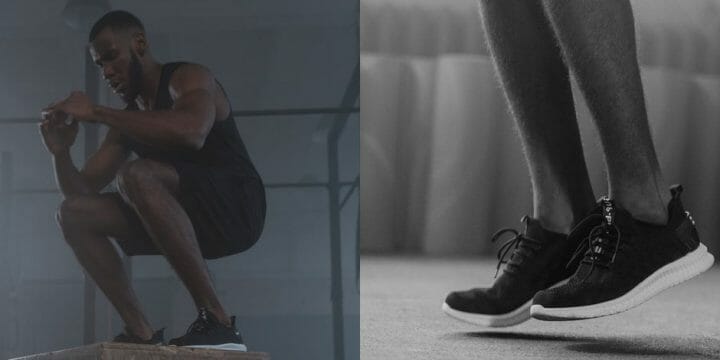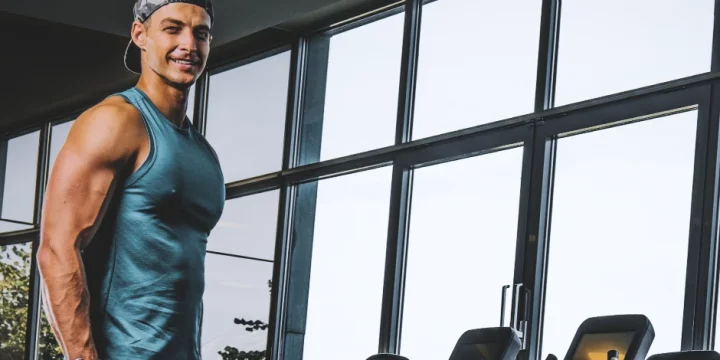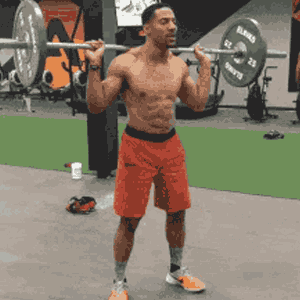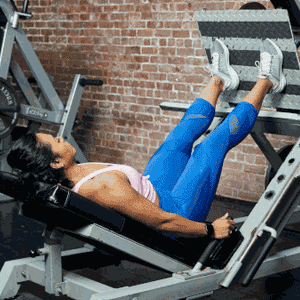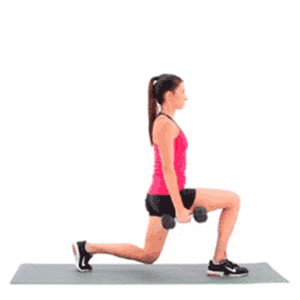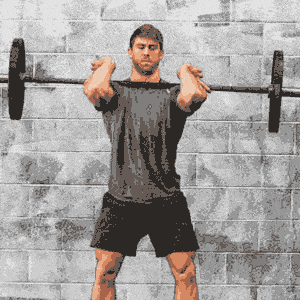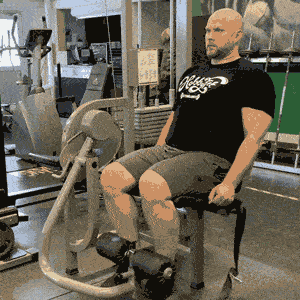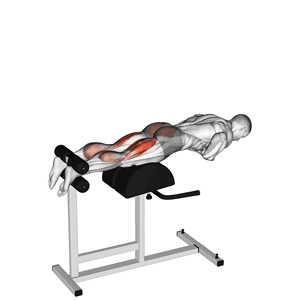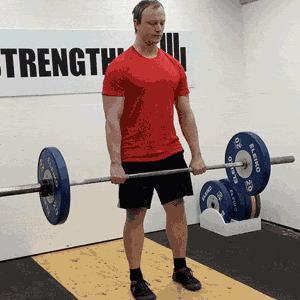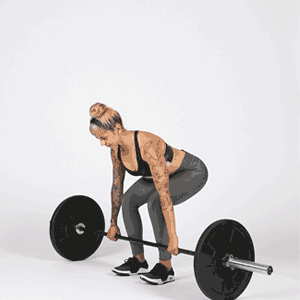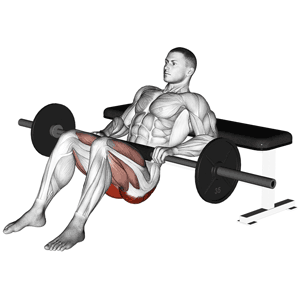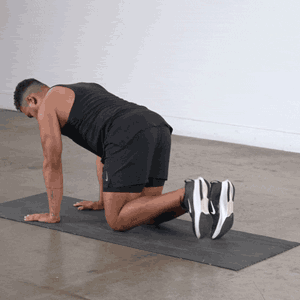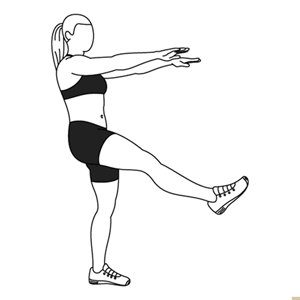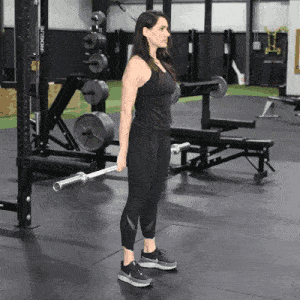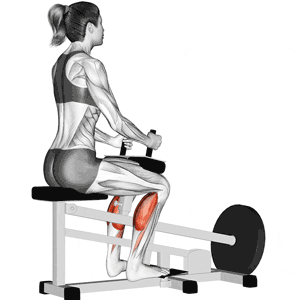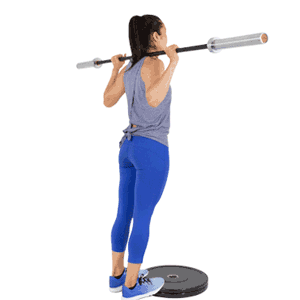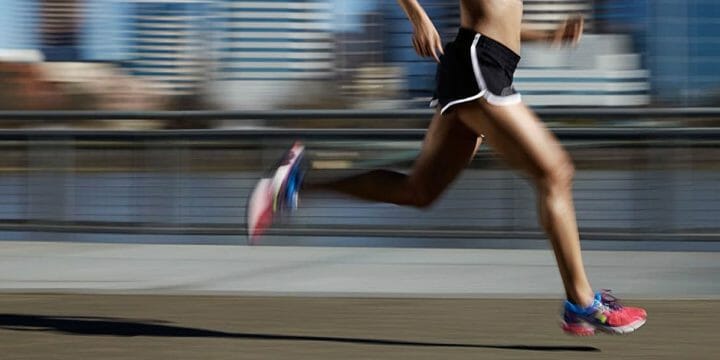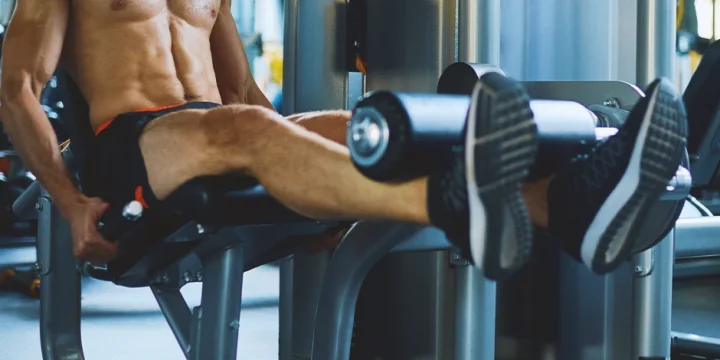As a certified personal trainer with extensive experience in strength and conditioning, I've curated this list to include the most effective exercises for maximizing muscle growth in the legs.
Whether you're a beginner or an experienced athlete, these exercises, coupled with key insights and techniques, will help you achieve significant gains in muscle strength and size.
Also, check out our selection of the best protein powders for building muscle, which will help you achieve your fitness goals.
Quick Summary
- To maximize muscle building in the legs, incorporate a variety of exercises like barbell squats, leg presses, and lunges, each targeting different muscle groups for comprehensive development.
- The article emphasizes a mix of compound movements like squats and deadlifts and isolation exercises like leg extensions to effectively target all areas of the legs.
- A study on the National Center for Biotechnology Information website recommends not exceeding 30 degrees of internal ankle rotation or 80 degrees of external rotation during squats to maximize stability and promote normal patella tracking, which is essential for effective and safe leg workouts.
- As a fitness enthusiast, I find the approach of combining strength, balance, and coordination in leg workouts to be highly effective for overall leg development.
Top 14 Leg Exercises To Build Muscles
1. Barbell Squats
Areas covered: Quadriceps, glutes, and hamstrings.
According to one of the studies from the National Center for Biotechnology Information website, the back squat is one of the best exercises used to enhance athletic performance as it necessitates the harmonized interaction of numerous muscle groups and strengthens the prime movers needed to support explosive athletic activities such as jumping, running, and lifting [1].
How-To: To perform the movement, simply start with a bar placed on the back of the neck and the feet shoulder-width apart.
Bend at the hips and knees whilst the upper body remains upright (and the back remains perfectly straight) and lower the glutes down until the hips and knees reach at least a 90-degree angle. Return to the top and repeat the movement.
Tip: Using a weightlifting belt helps increase spine and core stability, allowing you to lift heavier.
2. Leg Press
Areas covered: Quadriceps, glutes, and hamstrings.
Another study from the National Center for Biotechnology Information website that evaluated muscle activity of the leg press and its variants concluded that the vastus lateralis and vastus medialis elicited the greatest muscle activation during the leg press exercise, followed closely by the rectus femoris [2].
How-To: To perform this movement, lie with the back flat against the pad and place the feet shoulder-width apart on the weight platform.
Bend at the hips and knees whilst lowering the platform until they reach a 90-degree angle, then return to the starting position whilst ensuring a slight bend is left in the knee and hip joints at all times.
Also Read: 10 Best Crossfit Leg Workouts
3. Lunges
Areas covered: Quadriceps, hamstrings, glutes, inner and outer thighs.
Lunges are another strong favorite of mine, and is always featured in my leg day routine.
The reason that they’re one of the most effective leg exercises out there is that they require strong leg muscles as well as balance and coordination.
Build strength by adding in some heavier dumbbells.
How-To: Start with the feet shoulder width apart with one dumbbell in each hand. Proceed to step one foot out in front of the body whilst keeping one leg behind.
Bend the hips and knees to 90 degrees whilst lowering the glutes, then return to the starting position and switch legs.
4. Front Squats
Areas covered: Quadriceps, glutes, upper back and core.
Like regular back squats, these will make you feel every single muscle from your toes to your glutes.
But what the front squats also deliver is some added pressure on your core and back muscles, but more specifically, your quads. I’ve incorporated this into my workout routine as well as my clients and it’s given them that muscular legs look.
How-To: To perform a front squat, start with a barbell resting across your shoulder clavicle - support the bar by crossing your arms over it and resting the hands on your shoulders.
Proceed to bend at the hips and knees whilst lowering the body so that the glutes hover just above the ground and the hip and knee joints reach a 90-degree angle. Return to the starting position and repeat.
You can watch this video tutorial below to learn more about front squats.

Equipment to help with your Squat:
5. Leg Extensions
Areas covered: Quadriceps.
Like regular back squats, these will make you feel every single muscle from your toes to your glutes.
Leg extensions are really one of the best leg exercises to really target the quad muscles. As a resistance exercise, it’s ideal if you have any joint injuries because it will allow you to set very specific weights from a low range.
How-To: Place the pad just above the ankle joint and ensure the knees are bent to 90 degrees. Proceed to elevate the pad by raising the legs until the calves are parallel to the floor.
Leave a slight bend at the knees at the top of the movement, and then return to the starting position.
Check out the best leg extension machines out on the market.
6. Hamstring Raise
Areas covered: Hamstrings, glutes.
This is one of my favorite bodyweight exercises that directly targets the glutes and hamstrings and is a must on for your leg day routine. It does require a special bench, and if your gym has one, then make sure you take advantage.
How-To: To perform this movement, position the body on the glute ham platform (ask your gym if they have one) so that the knees rest just behind the peak of the kneepads.
Proceed to lower the body by straightening the legs until they are fully extended (with a slight bend at the knee) and the body is parallel to the floor in mid-air.
Proceed to raise the body back up to the starting position purely by using the hamstrings and glutes
7. Romanian Deadlifts
Areas covered: Hamstrings, glutes.
Before you jump into the instructions, I have to make it clear that the Romanian deadlift requires perfect technique. If you mess things up and the weight transfers to your lower back, then you’ll end up paying for your chiropractor’s kids to go to college.
You can even alternate this with different types of squats for better results.
How-To: To perform this exercise, grab a barbell and hold it at hip height with the feet shoulder-width apart and the hands gripping the bar just outside shoulder-width.
Proceed to bend at the hips whilst keeping the knees straight (with only a slight bend maintained at all times for safety) and lower the body down whilst reaching towards the ground with the bar and keeping the back totally straight.
Raise the upper body back up to the starting position.
You may also like: dumbbell vs barbell.
8. Deadlifts
Areas covered: Back, glutes, hamstrings.
Traditional deadlifts are fantastic for powering through some serious weight.
What I love about deadlifts is that by switching between a barbell and dumbbells you will shift your center of gravity. With a barbell, it’s further forward engaging your core, while dumbbells allow you to shift further back to really engage your glutes. Studies show that it's a great exercise to increase your testosterone. See the full review of Testogen, a testosterone booster.
How-To: Start with a bar at ground level and proceed to grip it with both hands whilst ensuring they are placed just outside shoulder-width apart.
Proceed to bend the hips and knees so that the body is in a seated position whilst keeping the back upright and straight.
From here, raise the body into a standing position whilst lifting the bar away from the ground until it reaches hip height. Proceed to return to the seated position and return the bar to the ground whilst keeping the back straight throughout.
Incorporating deadlifts one or two days a week into a weight training session will develop strength in the hamstrings, glutes, low back, and upper back.
- Zach Mayer, Master Trainer Burn 60 Studios
9. Barbell Bridges
Areas covered: Glutes.
This one will take a bit of practice to get the balance right, so make sure you start with lower weights on the bar. The last thing you want to have to happen is the bar rolling down your body. Beyond a bruised ego it’ll likely cause some injury as well.
How-To: Lie flat on the back with a barbell placed at hip height and grab the bar with a double overhand grip.
Bend the knees, and whilst keeping the feet flat against the floor, proceed to elevate the glutes up and away from the ground whilst keeping the feet and back of the shoulders in contact with the floor.
Lower the body back down without letting the glutes touch the ground and repeat the movement.
From here, raise the body into a standing position whilst lifting the bar away from the ground until it reaches hip height. Proceed to return to the seated position and return the bar to the ground whilst keeping the back straight throughout.
10. Glute Kickbacks
Areas covered: Glutes.
Similar to leg extensions, glute kickbacks are ideal if you want to limit the amount of weight and strain you place on your leg joints. With a gradual increase in weight, you can put a lot of pressure on your butt muscles with great results.
For more booty exercises, see our article here.
How-To: Assuming you’re using a cable machine, place the foot stirrup around the base of one foot whilst lowering the body down until it is on a 45-degree angle parallel to the floor.
Whilst reaching the arms out to support the upper body, push the leg with the stirrup attached out and backwards away from the body (in a “donkey kick” motion) whilst keeping the opposite leg straight and anchored to the floor.
Return to the starting position and repeat the movement for the desired rep count before switching legs.
From here, raise the body into a standing position whilst lifting the bar away from the ground until it reaches hip height. Proceed to return to the seated position and return the bar to the ground whilst keeping the back straight throughout.
Improve your glute kickbacks by watching this video below.

11. Pistol Squat
Areas covered: Quads, hamstrings, glutes.
One of my favorite leg exercises, if you’ve never done pistol squats before, then prepare yourself for some serious burning both in the down and up moves. Unless you’re a yoga master, keeping your balance is going to force you to slow down the move which adds strain.
How-To: Start in a standing position with your arms stretched out in front of you. Lift one leg straight up until it’s parallel to the ground.
From here, slowly lower your body down until your buttocks are below your knee.
Your arms and outstretched leg will provide balance, which you will need especially on the way back up.
Push yourself up through the heel and return to a standing position, ideally without falling over. It’s a good idea to practice this one in private to avoid some damaged ego in the gym.
12. Hack Squats
Areas covered: Quads, glutes, hamstrings.
One of the few leg exercises I perform using a machine, perfect if you struggle with regular barbell squats. The physical motion is very similar, and you engage a lot of different muscles including your core.
How-To: First of all, locate the hack squat machine at your gym. No, this is not some sort of medieval torture device, but if you work it right it might feel that way after. Step inside the machine and press your back and shoulders firmly against the pads.
Your feet should be a little less than shoulder width apart and remain flat throughout the move. Lower your body slowly until your thighs are parallel with the platform before pushing up through your heels.
Make sure you don’t hyperextend your knees at the top by keeping them slightly bent. This is especially important with heavier weights.
13. Seated “Donkey” Calf Raises
Areas covered: Calves
While your calf muscles do get engaged in many of the above exercises, you will probably notice a lack of burn in your lower legs. One way to rectify that is through calf raises. In this seated position version you can minimize the amount of strain on joints.
How-To: To perform a seated donkey calf raise, place the pad on the thighs above the knee joint whilst in a seated position.
Proceed to elevate the pad by raising the feet onto the tips of your toes, then return to the starting position without letting the feet go completely flat against the ground and repeat for the desired rep count.
We have a whole article on the best calf exercises that you can do.
14. Standing Barbell Calf Raises
Areas covered: Calves
This is a perfect companion to back or front squats. During a regular squat, your lower legs muscles won’t really start to burn. Through some calf raises with added weight, you will only need a couple of reps to feel the pain.
How-To: To perform a standing barbell calf raise, place a barbell on the back of the shoulders, and proceed to elevate the body by raising the feet onto the tips of your toes.
Return to the starting position without letting the feet go completely flat against the ground, and repeat the movement for the desired rep count.
Bonus tip: When you switch between sets, try moving your toes to an outward or inward position. This will trigger quite a difference to the strain you feel, making it a more effective exercise.
FAQs
How Does the Mind-Muscle Connection Enhance Leg Workouts?
The mind-muscle connection involves actively focusing on the muscles being worked during exercise, which can lead to more effective muscle engagement and growth. By concentrating on the specific muscle groups during leg workouts, you can ensure a more targeted and efficient training session.
What Role Does Nutrition Play in Building Leg Muscles?
Proper nutrition is crucial for muscle development, especially for the legs, which contain some of the body's largest muscle groups. A balanced diet rich in protein, healthy fats, and carbohydrates, along with adequate hydration, supports muscle growth and recovery after leg workouts.
How Do Leg Exercises Contribute to Overall Health?
Leg exercises offer numerous health benefits beyond muscle building, including improved cardiovascular health, enhanced balance and coordination, and an increased metabolic rate. Regular leg workouts can lead to better overall fitness and contribute to a healthier lifestyle.
How Can You Customize Leg Workouts for Different Fitness Goals?
Customizing leg workouts involves adjusting exercise types, sets, and repetitions based on specific fitness goals, such as strength, endurance, fat loss, or muscle hypertrophy. For instance, higher reps and sets are typically suited for endurance, while lower reps with heavier weights are ideal for strength building.
What Are Effective Recovery and Injury Prevention Strategies for Leg Workouts?
Effective recovery strategies for leg workouts include incorporating stretching routines, using foam rollers for muscle relaxation, and allowing adequate rest between workouts. To prevent injuries, it's important to maintain proper form during exercises and gradually increase workout intensity.
References:
- https://www.ncbi.nlm.nih.gov/pmc/articles/PMC4262933/
- https://www.ncbi.nlm.nih.gov/pmc/articles/PMC7369968/
About The Author
You May Also Like
